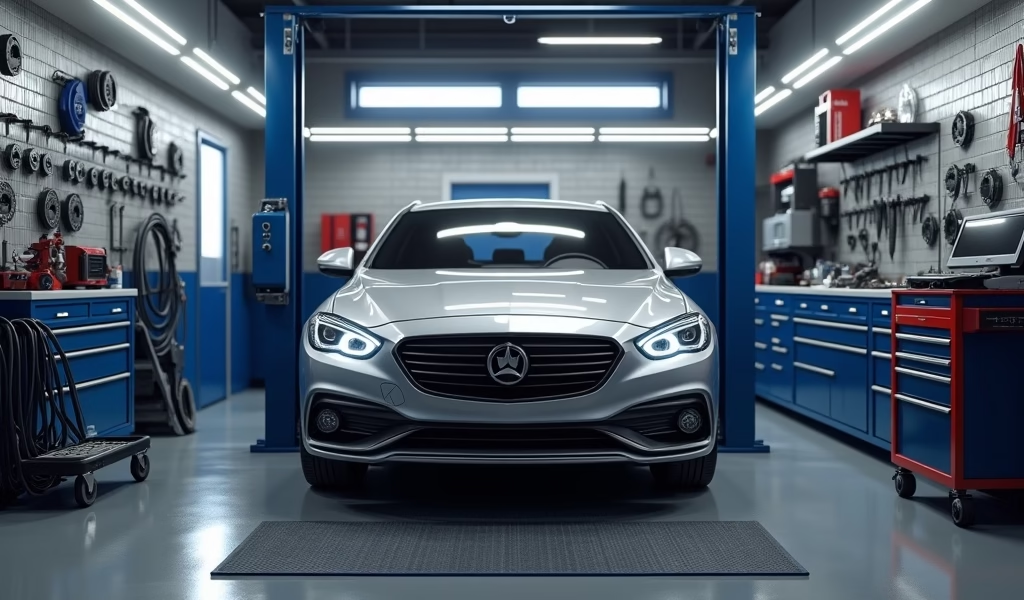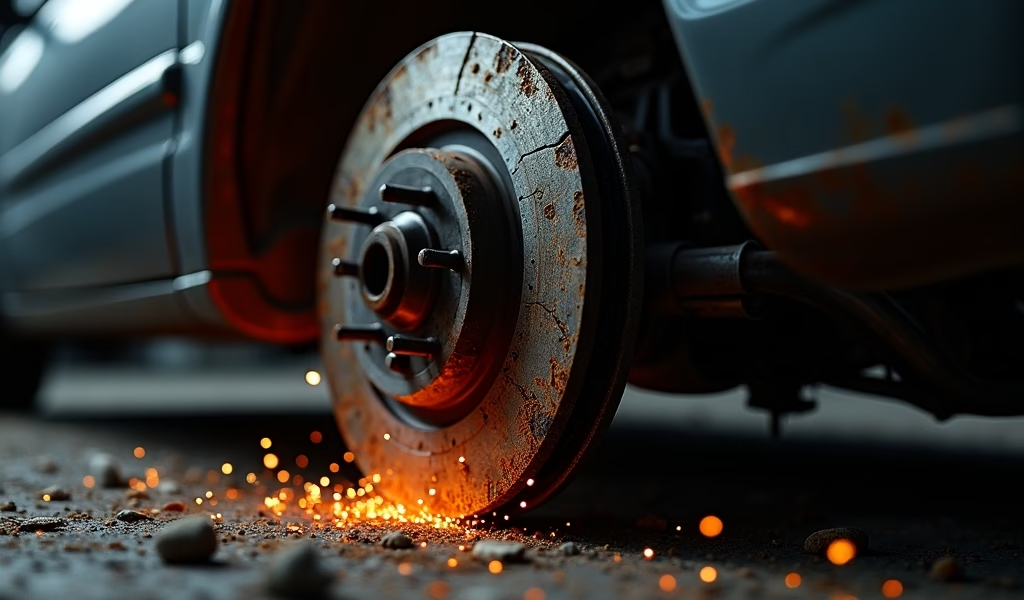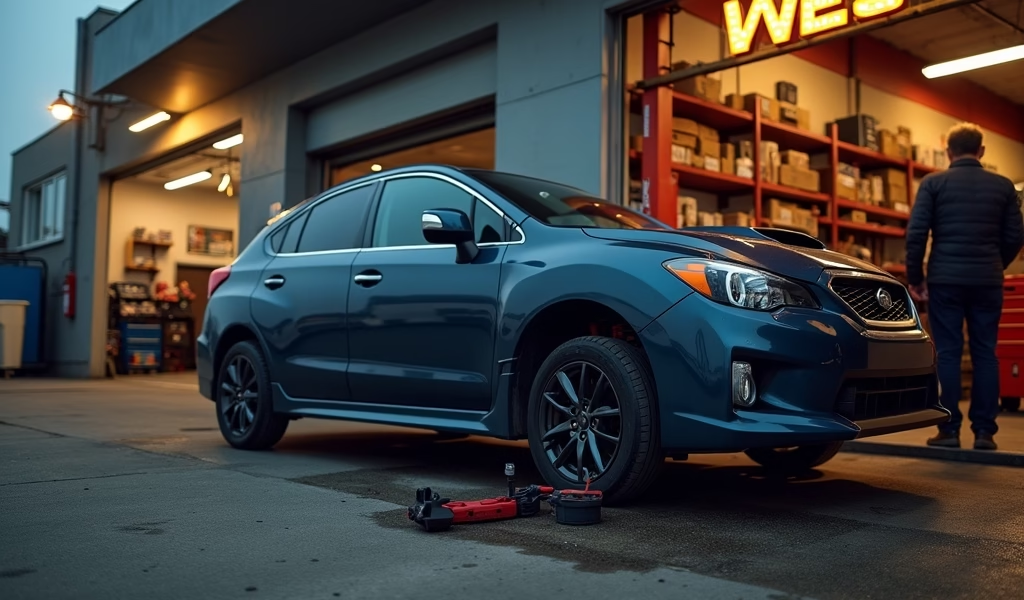Overview
This article outlines ten essential vehicle maintenance practices, emphasizing the importance of regular brake inspections alongside other critical maintenance areas including oil changes, tire care, battery maintenance, fluid checks, and alignment. Proper vehicle maintenance not only prevents costly repairs and breakdowns but also ensures optimal safety performance, particularly in critical systems like brakes that should be checked every 10,000-15,000 miles rather than waiting for warning signs to appear.
Table of Contents
- Brake System Basics: How Your Car Stops
- Regular Brake Inspections: Don’t Wait for the Screech
- Beyond Brakes: Why Oil Changes Matter
- Tire Maintenance: Your Connection to the Road
- Battery Care: Preventing the Dead Car Blues
- Air Filters: Helping Your Engine Breathe
- Fluid Level Checks: Your Car’s Lifeblood
- Belt and Hose Inspections: The Unsung Heroes
- Washing and Waxing: More Than Just Looking Good
- Suspension and Alignment: Smooth Sailing Ahead
- Keeping Your Vehicle Road-Ready: Final Thoughts
- Frequently Asked Questions
Brake System Basics: How Your Car Stops
When you visit a brake shop for maintenance, understanding what makes your car stop can help you make informed decisions. Your brake system isn’t just about that pedal under your foot—it’s a complex network of components working together to keep you safe. Most modern vehicles use disc brakes up front and either disc or drum brakes in the rear.
Think of your brake system as your car’s emergency response team. When you press that pedal, hydraulic fluid transfers force to your brake calipers, which squeeze the brake pads against the rotors (those shiny metal discs). This friction creates the stopping power that brings tons of moving metal safely to a halt. Pretty impressive when you think about it!
As a mechanic with 15 years under my belt, I’ve seen how regular maintenance prevents those white-knuckle moments when brakes fail. Let’s explore ten essential maintenance tips to keep your vehicle running smoothly and safely, starting with the most critical—your brakes.
Regular Brake Inspections: Don’t Wait for the Screech
The cardinal rule of brake maintenance? Don’t wait for that hair-raising metallic screech before getting your brakes checked. That sound means your brake pads have worn down to their wear indicators—metal tabs designed to make that awful noise as a last-ditch warning.
Ideally, have your brakes inspected every 10,000-15,000 miles or at least twice a year. According to NHTSA safety recommendations, regular inspections are crucial for preventing accidents and ensuring optimal vehicle performance.
What should you watch for between inspections? Any change in how your brake pedal feels (particularly if it seems “soft” or sinks to the floor), grinding noises, pulling to one side when braking, or vibration during braking. These symptoms mean it’s time to schedule a brake repair appointment—immediately.

Beyond Brakes: Why Oil Changes Matter
While we’re talking vehicle safety, let’s not forget that regular oil changes are just as critical as brake maintenance. Engine oil doesn’t just lubricate—it cleans, cools, and protects your engine from premature wear.
Modern vehicles can often go 5,000-7,500 miles between oil changes, but always check your owner’s manual for the manufacturer’s recommendation. Using the right type of oil matters too—your engine was designed with specific viscosity requirements in mind.
Think of oil changes as preventive medicine for your car. Fresh oil helps your engine run cooler and more efficiently, improving fuel economy and extending your vehicle’s lifespan. When you bring your car in for brake replacement, ask about the condition of your oil—many shops offer courtesy inspections that can catch issues before they become expensive problems.
Tire Maintenance: Your Connection to the Road
Your tires are literally where the rubber meets the road—they’re your vehicle’s only contact with the pavement. Even the best brake system can’t work properly with worn or improperly inflated tires.
Check your tire pressure monthly (including that neglected spare) using a quality gauge. The correct pressure isn’t what’s stamped on the tire sidewall—it’s what’s listed on the driver’s door jamb sticker or in your owner’s manual.
Rotate your tires every 5,000-7,500 miles to promote even wear. While you’re at it, check the tread depth—the old penny test works great. Insert a penny with Lincoln’s head upside down into your tire tread; if you can see the top of Abe’s head, it’s time for new tires. Research from Consumer Reports shows that even small reductions in tread depth can significantly increase stopping distances, especially on wet roads.
Battery Care: Preventing the Dead Car Blues
Even the best-maintained vehicle becomes a large paperweight with a dead battery. Most car batteries last 3-5 years, but extreme temperatures can dramatically shorten that lifespan.
Watch for warning signs like slow engine cranking, dimming headlights, or electronic features acting up. These symptoms often precede complete battery failure.
Keep battery terminals clean from corrosion (a mixture of baking soda and water works wonders), and consider a battery tender if your vehicle sits unused for extended periods. Many brake shops include battery testing as part of their multi-point inspections—take advantage of this to avoid the dreaded “click-click” of a dead battery on a cold morning.

Air Filters: Helping Your Engine Breathe
Your engine breathes through its air filter, and a clogged one is like trying to run with a stuffy nose—inefficient and uncomfortable. A dirty air filter can reduce fuel economy by up to 10% and affect performance.
Most air filters should be changed every 15,000-30,000 miles, but dusty environments may require more frequent replacement. It’s often an easy DIY job that takes just minutes but pays dividends in improved performance and fuel economy.
While you’re at it, don’t forget about your cabin air filter—it’s what keeps the air you breathe inside your car clean. Most manufacturers recommend replacing it annually, especially if you regularly drive in areas with poor air quality or high pollen counts.
Fluid Level Checks: Your Car’s Lifeblood
Your car relies on various fluids to operate properly—coolant prevents overheating, transmission fluid enables smooth shifting, brake fluid transfers force to your brakes, and power steering fluid helps you turn with ease. Each has a specific role in keeping your vehicle running smoothly.
Check fluid levels monthly and look for leaks under your vehicle. A small puddle now can prevent a massive repair bill later. Pay special attention to your brake fluid—if it’s low, there’s a leak somewhere in the system that needs immediate attention.
Brake fluid is hygroscopic, meaning it absorbs moisture from the air over time. This moisture lowers the fluid’s boiling point and can cause brake fade during heavy use. Most manufacturers recommend changing brake fluid every 2-3 years, regardless of mileage, to ensure optimal braking performance.
Belt and Hose Inspections: The Unsung Heroes
Belts and hoses are the unsung heroes of your engine bay, quietly doing their jobs until they fail—often catastrophically. Regular inspections can catch potential failures before they leave you stranded.
Look for cracks, fraying, or softening in these components. Most modern serpentine belts last 60,000-100,000 miles, but it’s worth checking them regularly. A $30 belt replacement is infinitely preferable to being stranded or causing engine damage.
Coolant hoses typically last about four years, but extreme temperatures can accelerate aging. Give them a gentle squeeze when the engine is cool—they should feel firm but not rock-hard. Soft spots or bulges indicate a hose that’s ready to fail.
Washing and Waxing: More Than Just Looking Good
Regular cleaning isn’t just about looking good in the parking lot—it’s about preventing premature rust and paint damage. Road salt, bird droppings, and tree sap can all damage your finish permanently if left too long.
Wash your vehicle regularly and apply wax every 3-4 months to maintain that protective barrier against the elements. Pay special attention to your wheel wells and undercarriage, especially if you live in areas where road salt is used in winter.
While you’re washing, take a moment to check your brake calipers for any signs of leaking fluid or excessive rust. This quick visual inspection can catch brake issues before they affect your stopping ability.
Suspension and Alignment: Smooth Sailing Ahead
If your car pulls to one side or your steering wheel vibrates, your alignment might be off. Poor alignment causes uneven tire wear and reduces fuel efficiency. It can also put additional stress on your suspension components, leading to premature failure.
Have your alignment checked annually or after hitting significant potholes or curbs—your tires (and wallet) will thank you. Many alignment issues also affect braking performance, causing your vehicle to pull to one side during braking.
Don’t ignore unusual sounds from your suspension—clunks, knocks, or squeaks often indicate worn components that need attention. Addressing these issues promptly can prevent more extensive damage and keep your ride comfortable and safe.
Keeping Your Vehicle Road-Ready: Final Thoughts
Regular maintenance might seem like an unnecessary expense when everything’s running fine, but it’s the automotive equivalent of preventive healthcare. A stitch in time saves nine, as they say, and nowhere is this truer than with your vehicle.
Your brake system deserves special attention—after all, being able to stop is even more important than being able to go. Developing a relationship with a trusted brake shop can save you money in the long run through preventive maintenance and early problem detection.
Why not start today? Create a simple maintenance calendar, set reminders on your phone, and give your faithful automotive companion the care it deserves. Your car, your safety, and your bank account will all benefit from your attention to these simple maintenance tasks.
Frequently Asked Questions
How often should I have my brakes checked?
Have your brakes inspected every 10,000-15,000 miles or at least twice yearly. Don’t wait for warning signs like noise or vibration to appear before scheduling an inspection.
What’s the average lifespan of brake pads?
Most brake pads last between 30,000-70,000 miles depending on driving habits and conditions. City driving with frequent stops typically wears pads faster than highway driving.
How do I know if I need new rotors or just pads?
Signs you need new rotors include pulsation when braking, visible scoring or grooves on the rotor surface, or thickness below manufacturer specifications. A qualified technician can measure your rotors to determine if they can be resurfaced or need replacement.
Is it normal for brakes to make some noise?
Occasional light squeaking, especially in wet or cold conditions, can be normal. However, persistent squealing, grinding, or scraping noises indicate a problem that needs professional attention.
Can I save money by replacing just the pads and not the rotors?
While it’s possible to replace just the pads, worn or damaged rotors can cause new pads to wear prematurely and reduce braking performance. It’s often more cost-effective long-term to replace both when necessary.


Pingback: Brake Inspection: 5 Proven Safety Tips - knowsyourcar.com